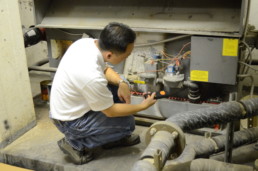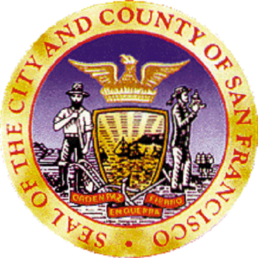Through a range of diverse and ambitious initiatives targeting everything from small homes to large commercial properties, San Francisco has accelerated the equitable uptake of energy efficiency retrofits.
To achieve the city’s goal of reducing greenhouse gas emissions by 80% by 2050, San Francisco, in 2011, adopted a holistic approach to energy efficiency in a range of buildings, with a focus on energy equity and market impact. The city has since facilitated energy efficiency upgrades in 3,000 commercial, 1,000 multi-family, and 500 single-family buildings via a suite of programs, many of which are specifically designed to target small businesses and low-income housing. One such program is an energy efficiency undertaking in the Chinatown Development Center’s affordable housing project, which reduced energy use by 49,235 kWh and saved 30% in annual average utility costs.
300,000 tons of annual CO2 emissions reduced by 2030 via the city’s energy efficiency initiatives
Cities100 – 2016
In addition to offering energy upgrades and incentives, San Francisco is working to transform the market for energy efficiency by, for instance, passing the Existing Commercial Building Benchmarking Ordinance (ECBO) which requires commercial property owners to report total energy use annually and obtain an energy audit or conduct retro-commissioning every five years. The audits found that in the first 800 buildings subject to the policy, an investment of $60.5 million would yield $25 million in annual energy savings.

The challenge
Buildings, especially older commercial and residential ones, are responsible for approximately half of San Francisco’s emissions. However, building owners and occupants often lack capital for energy efficiency investments. To remedy this, the city adopted an ambitious approach to enable previously unattainable energy retrofits for residents and spur investment in energy efficiency with commercial users.
Co-benefits
Economic The program has provided $18 million in incentives, and secured more than $3.8 million in financing, for efficiency projects, saving customers an average of $3,000 in utility costs per year.
Environmental San Francisco has achieved a 24% reduction in greenhouse gas emissions, including a reduction of more than 27,000 metric tons of CO2 annually from energy efficiency projects.
Health Upgrades completed under San Francisco’s program have helped low- and fixed-income residents enhance health and indoor comfort by reducing cold indoor temperatures, condensation, and mold.
Social The program ensures that low-income communities, which are the most vulnerable to climate change impacts, have access to resources to build their energy resilience.
About San Francisco
San Francisco is the cultural, commercial, and financial center of Northern California and is the fourth-most populous city in California. It has an estimated population of 870,887. A popular tourist destination, San Francisco is known for its eclectic mix of architecture, and landmarks, including the Golden Gate Bridge, cable cars, the former Alcatraz Federal Penitentiary and its Chinatown district. As of 2017, San Francisco is ranked high on world liveability rankings.


